The weight a bulldozer can push depends on various factors, including its size, engine power, and blade capacity. Small bulldozers may push up to 20,000 pounds (10 tons), while larger models can handle over 100,000 pounds (50 tons) or more. Generally, bulldozers can push more weight on level ground compared to slopes. Slopes reduce the effective pushing capacity due to gravity and reduced traction.
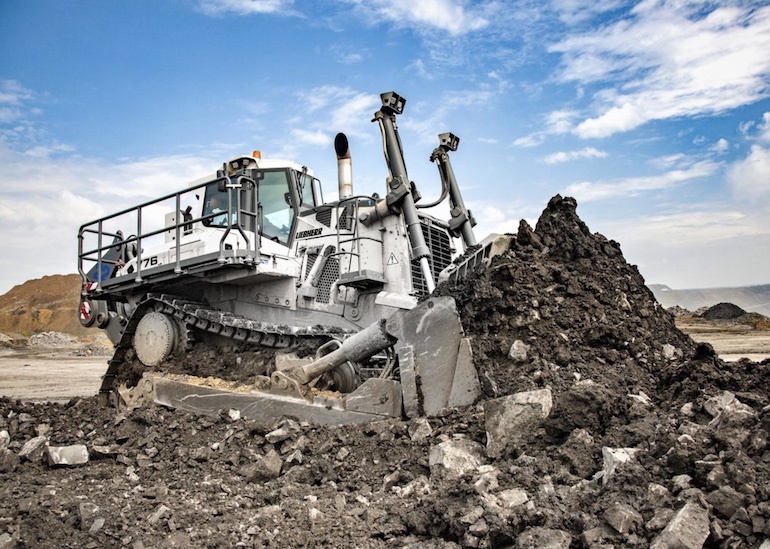
Most modern dozers / bulldozers can be equipped with different blade types, such as straight blades for general pushing and U-blades for moving loose materials like soil or snow. Some bulldozers allow for attachments like rippers or counterweights to enhance their pushing capacity. However, these modifications should be done following manufacturer guidelines. Bulldozers are commonly used for tasks like earthmoving, road construction, land clearing, and pushing heavy materials like gravel, soil, or debris.
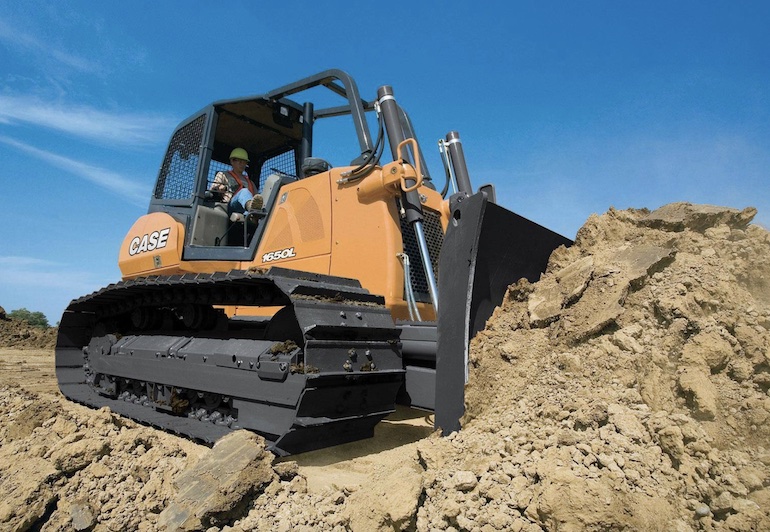
The amount of weight a bulldozer can push, often referred to as its pushing capacity or push force, varies significantly depending on the size and type of bulldozer. Bulldozers are categorized into different classes based on their horsepower (HP) and size, and this affects their pushing capacity. Here’s a general overview:
Small Bulldozers (Under 150 HP)
- Small bulldozers are typically used for light grading and landscaping.
- They can push lighter loads, typically up to several tons.
- Pushing capacity for small bulldozers can range from 5,000 to 20,000 pounds or more, depending on the specific model.
- Common Uses: Landscaping, light grading, small construction projects, snow removal
Medium Bulldozers (150 to 250 HP)
- Medium-sized bulldozers are versatile and suitable for general construction and site preparation.
- They can push heavier loads compared to small dozers.
- Pushing capacity for medium bulldozers typically ranges from 20,000 pounds to 100,000 pounds.
- Common Uses: General construction, site preparation, road building, forestry
Large Bulldozers (250 to 450 HP)
- Large bulldozers are used for heavy construction, mining, and large-scale earthmoving projects.
- They have a significantly higher pushing capacity.
- Pushing capacity for large bulldozers can range from 100,000 pounds to 200,000 pounds.
- Common Uses: Heavy construction, mining, quarrying, large-scale earthmoving.
Extra-Large Bulldozers (Over 450 HP)
- Extra-large bulldozers are used for extreme earthmoving, mining, and major infrastructure projects.
- They have the highest pushing capacity among bulldozers.
- Pushing capacity for extra-large bulldozers can exceed 200,000 pounds.
- Common Uses: Extreme earthmoving, mining, major infrastructure projects.
It’s important to note that the pushing capacity of a bulldozer depends not only on its size and power but also on factors like the condition of the terrain, the angle of the slope, and the type of material being pushed. Additionally, bulldozers often use specialized blades and attachments designed for specific tasks, which can also impact their pushing capacity.
For precise information on a particular bulldozer’s pushing capacity, it’s best to refer to the manufacturer’s specifications for that specific model, as these specifications can vary widely. Additionally, consulting with equipment experts and operators who are experienced with the particular bulldozer model and its capabilities can provide valuable insights into its real-world performance.
Note: Operators should always follow safety guidelines, wear seatbelts, and ensure the load is properly balanced. Avoid exceeding the bulldozer’s rated capacity to prevent accidents. Bulldozers are primarily designed for pushing and grading, not lifting. Using them for lifting heavy objects can be dangerous and is not recommended.
World’s Top 15 Largest Dozers (2024)
Here’s a list of the world’s top 15 Largest Dozers (2024) with their operating weights:
- Komatsu D575A-3 Super Dozer: Operating Weight – Approximately 336,420 lb pounds (152,600 kg) – is known for its impressive size and pushing power, making it ideal for mining operations.
- CAT D11: Operating Weight – Approximately 250,665 pounds (113,700 kg) – is one of the largest and most powerful bulldozers in the world, designed for heavy-duty applications such as mining and large-scale construction.
- Komatsu D475A-5: Operating Weight – Approximately 238,960 pounds (108,390 kg) – is a powerful crawler tractor often seen in mining and large construction projects.
- Shantui SD90-C5: Operating Weight – Approximately 234,263 pounds (106,260 kg) – is a large dozer used in construction and mining projects, known for its robust build and power.
- Komatsu D375A-8: Operating Weight – Approximately 163,340 pounds (74,090 kg) – combines power and efficiency for demanding tasks.
- Liebherr PR 776: Operating Weight – Approximately 161,354 pounds (73,189 kg) – is a high-capacity dozer suitable for demanding tasks like mining and quarrying.
- Shantui SD60-C5: Operating Weight – Approximately 155,712 pounds (70,630 kg) – is well-suited for operations in extremely harsh mining conditions.
- CHETRA T40: Operating Weight – Approximately 154,941 pounds (70,280 kg) – is the most powerful serial Russian bulldozer made for gold and coal mining industry.
- CAT D10: Operating Weight – Approximately 154,888 pounds (70,256 kg) – is a versatile dozer used in various industries, including construction and mining.
- CHETRA T35: Operating Weight – Approximately 137,414 pounds (62,330 kg) – is a powerful bulldozer for heavy-duty earthmoving and stripping operations including excavation of frozen and rocky soils.
- Liebherr PR 766 Litronic: Operating Weight – Approximately 119,462 pounds (54,187 kg) – combined with the advantages of diesel hydraulic drive and the operating control and cabin comfort, offers maximum capability at the highest level of efficiency..
- CAT D9: Operating Weight – Approximately 110,225 pounds (49,988 kg) – is a versatile and widely used bulldozer known for its reliability.
- John Deere 1050 P-Tier: Operating Weight – Approximately 94,580 pounds (42,900 kg) – is a dozer equipped with advanced technology for precision work.
- LiuGong 320C: Operating Weight – Approximately 74,990 pounds (34,015 kg) – B320C bulldozer is powered by Cummins engine with a rated power output of 257 kW.
- CASE 2050M: Operating Weight – Approximately 48,773 pounds (22,123 kg) – is a mid-sized bulldozer known for its reliability and efficiency.
Dozer Pushing Capacity FAQ
Q1: What factors affect a bulldozer’s pushing capacity?
A1: Several factors influence a bulldozer’s pushing capacity, including its engine power, size, blade size, and hydraulic systems. A heavier and more powerful bulldozer can generally push more weight.
Q2: Can a bulldozer push more weight on flat terrain compared to hilly or rocky terrain?
A2: Yes, bulldozers typically have higher pushing capacities on flat, stable terrain. Pushing capacity may be reduced on uneven, hilly, or rocky terrain due to decreased traction and stability.
Q3: Are there different types of blades that affect pushing capacity?
A3: Yes, there are various blade types, such as straight blades and U-blades. U-blades have a higher capacity for carrying material but may reduce the overall pushing capacity compared to straight blades.
Q4: What is the relationship between engine power and pushing capacity?
A4: Bulldozers with more powerful engines can generate greater hydraulic force, allowing them to push heavier loads. Engine power is a significant factor in determining pushing capacity.
Q5: Are there limitations to how much a bulldozer can push?
A5: Yes, every bulldozer has its limitations, and exceeding these limits can lead to mechanical stress, reduced lifespan, or even equipment failure. It’s essential to operate a bulldozer within its specified capacity.
Q6: How can I find the pushing capacity of a specific bulldozer model?
A6: You can find a bulldozer’s pushing capacity in its technical specifications provided by the manufacturer. These specifications detail its engine power, blade size, and other relevant details.
Q7: Can a bulldozer push more weight with additional counterweights?
A7: In some cases, adding counterweights to a bulldozer can enhance its stability and pushing capacity. However, it’s essential to follow the manufacturer’s guidelines for counterweight use.
Q8: What should I do if I need to push weights near or beyond a bulldozer’s rated capacity?
A8: It’s crucial to prioritize safety. If your project requires pushing weights beyond a bulldozer’s capacity, consider using a larger bulldozer or alternative equipment designed for heavier loads.
Q9: Can I modify a bulldozer to increase its pushing capacity?
A9: Modifying a bulldozer to increase its capacity can be complex and may void warranties or compromise safety. Consult with the manufacturer or a qualified mechanic before making modifications.
Always refer to the manufacturer’s specifications and guidelines for your specific bulldozer model, and exercise caution to ensure safe and efficient operation.
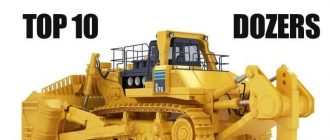
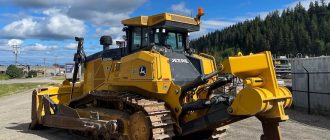
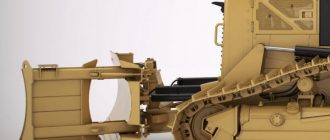
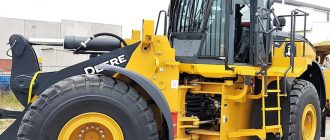
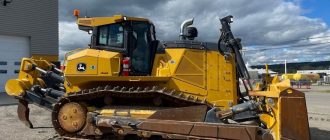
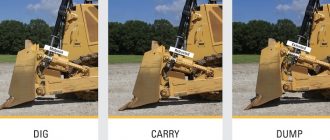
Does the weight that a bulldozer can push depend on its own mass? Or is it only the power of the bulldozer engine and the strength of its structure that is important here?
The weight that a bulldozer can push depends on several factors, including its own mass, the power of its engine, and the strength of its structure.
The mass of the bulldozer plays a crucial role in its pushing ability. A heavier bulldozer has more traction and stability, which allows it to push heavier loads without slipping. The weight of the bulldozer helps in providing the necessary friction between the tracks or wheels and the ground, preventing the machine from losing grip.
The engine power determines how much force the bulldozer can apply to the object it is pushing. A more powerful engine can generate higher torque, which translates into greater pushing force. Engine power is a critical factor, especially when moving heavy loads or working on difficult terrain.
The structural strength of the bulldozer, including its frame, blade, and hydraulic systems, ensures that the machine can withstand the forces involved in pushing heavy loads. A robust structure is essential to prevent bending, breaking, or other forms of mechanical failure during operation.
The type of terrain and ground conditions also affect the bulldozer’s pushing capability. Soft, muddy, or loose ground can reduce traction and make it harder for the bulldozer to push heavy loads, regardless of its mass or engine power. Conversely, hard and stable ground can enhance pushing performance.
The design, size, and angle of the bulldozer blade can impact how efficiently the machine can push materials. Different blades are designed for specific tasks, such as pushing loose soil, rocks, or debris. The angle at which the blade is set can also influence the pushing force and efficiency.
In summary, the weight that a bulldozer can push is a result of a combination of its own mass, engine power, structural strength, traction, ground conditions, and blade design. All these factors work together to determine the overall pushing capacity of the bulldozer. While engine power and structural strength are crucial, the mass of the bulldozer is equally important for providing the necessary traction and stability to push heavy loads effectively.